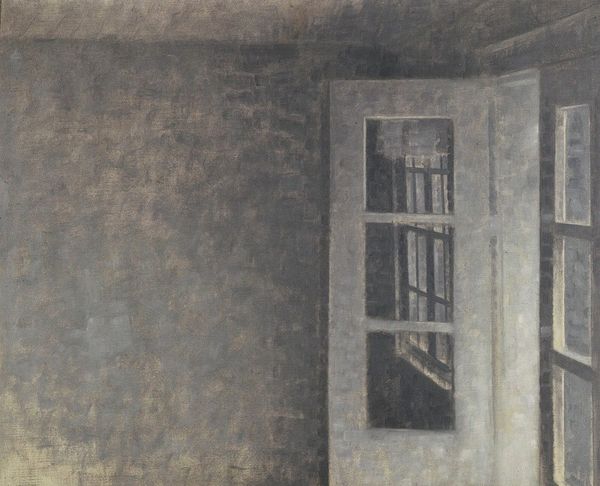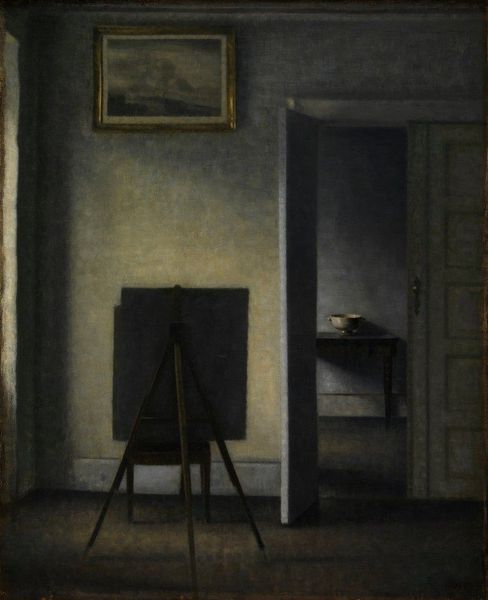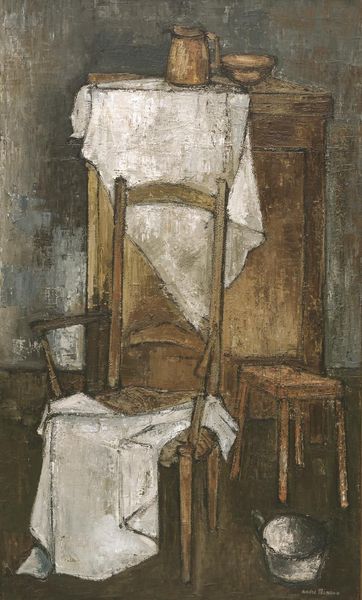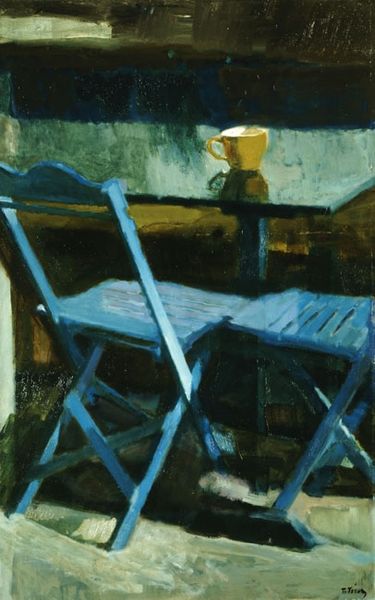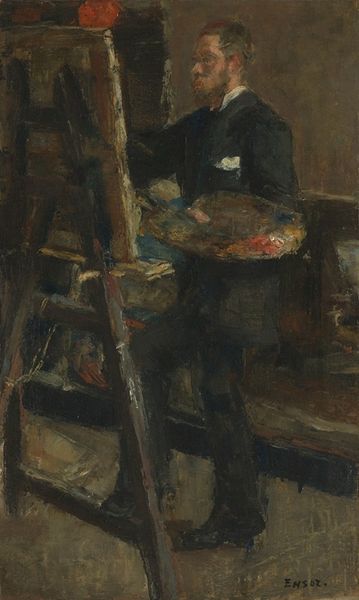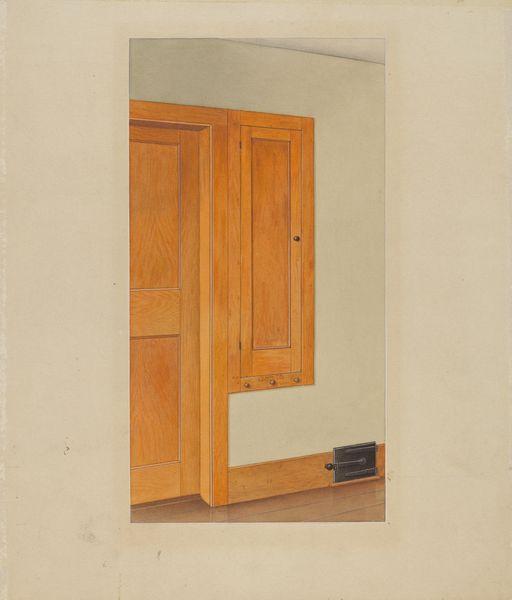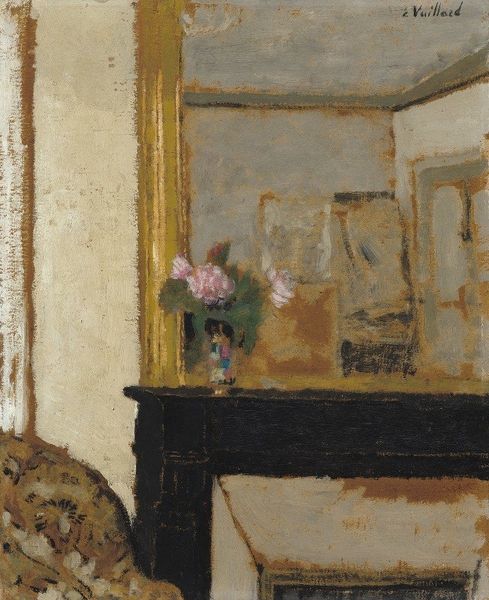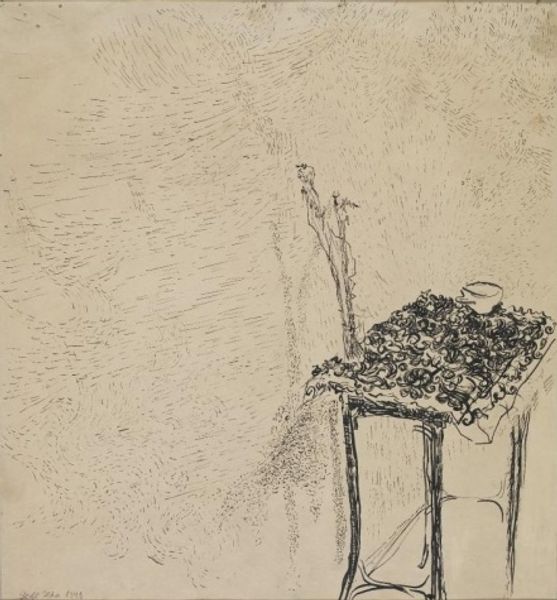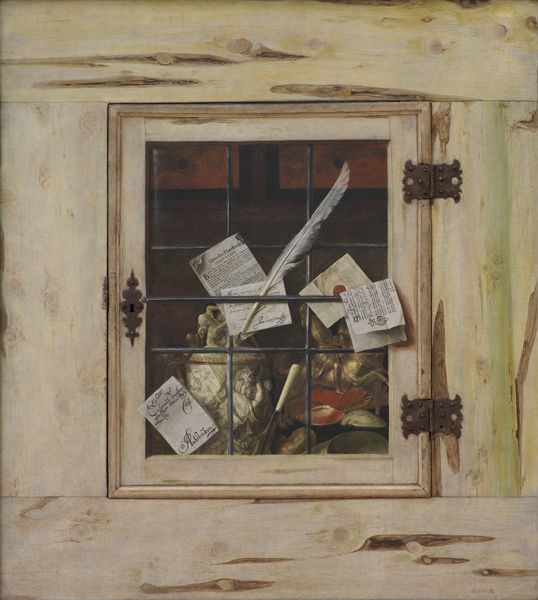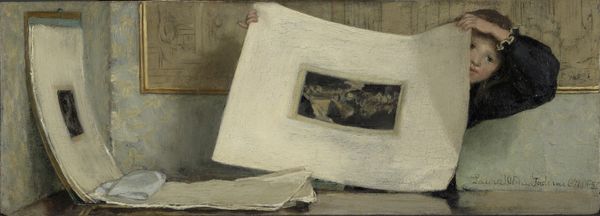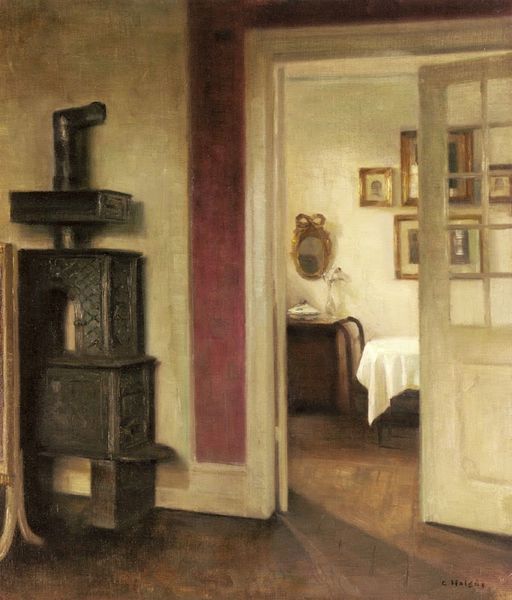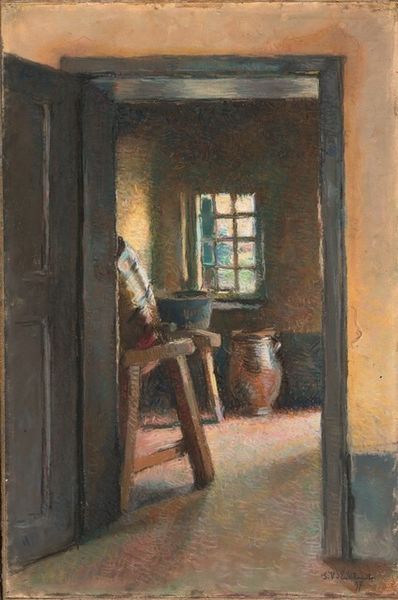
Dimensions: support: 714 x 511 mm
Copyright: © The estate of Richard Carline | CC-BY-NC-ND 4.0 DEED, Photo: Tate
Editor: Here we have Richard Carline’s "Studio Interior, Hampstead," currently residing at the Tate. I’m struck by the somber mood and the use of light against the dark background. How do you interpret the spatial relationships and the interplay of forms in this work? Curator: Note how the composition emphasizes verticality. The dark rectangle, bisected by a thin line, serves as the focal point, a void around which the other forms orbit. Consider the interplay of rectilinear forms: the table, the canvases, their echoing creating a structured, yet unsettling space. What does that say to you? Editor: It feels like there’s a tension between order and emptiness. The objects are arranged, but the overall impression is one of absence. I guess it’s about the artist's internal feelings, the painting becomes a map of the mind. Curator: Precisely. By deconstructing the visual elements, we can gain insight into how Carline constructs meaning. Editor: This has given me a new appreciation for formal analysis. Curator: Indeed. A rigorous examination of form unveils the artist's intent.
Comments
tate 6 months ago
⋮
http://www.tate.org.uk/art/artworks/carline-studio-interior-hampstead-t01914
Join the conversation
Join millions of artists and users on Artera today and experience the ultimate creative platform.
tate 6 months ago
⋮
Richard Carline was the son of the painter George Carline, and brother of Hilda. He studied in London and Paris. The artist's studio was a popular subject at this time. Carline's meditative painting emphasises the simple shapes of the objects depicted, resulting in an image that is almost abstract. Gallery label, September 2004

